Discover some of the fascinating fossils you can find around Britain, what they look like and where to look for them.
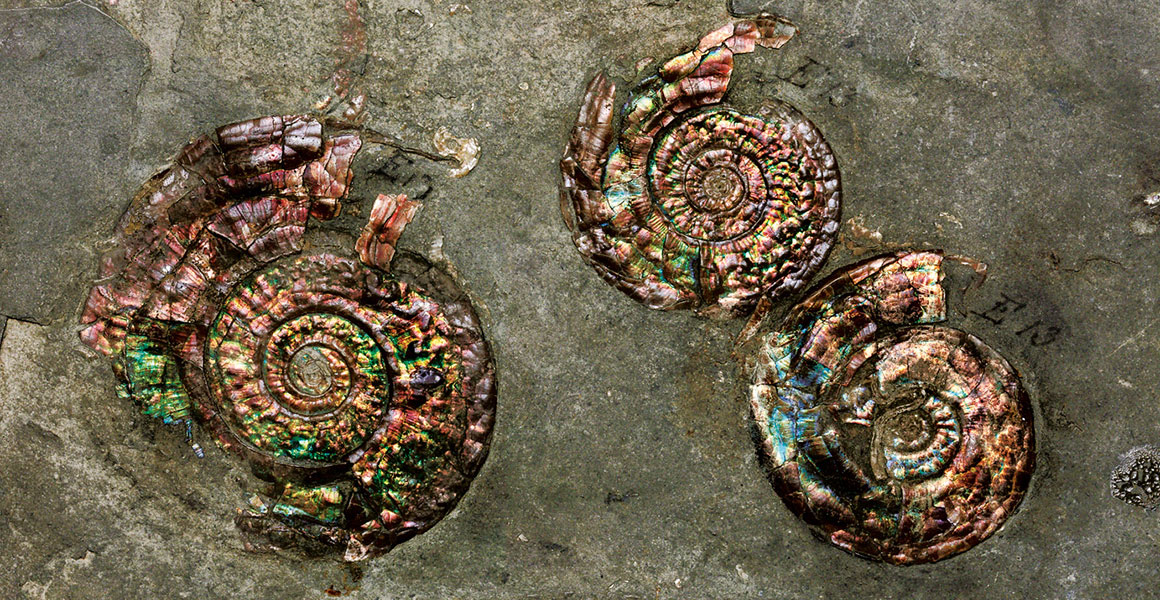
Ammonite fossils can be found all around the world, including on parts of the British coastline.
Take a look at these different kinds of fossils. What do they tell you about how Britain has changed?
Ammonites
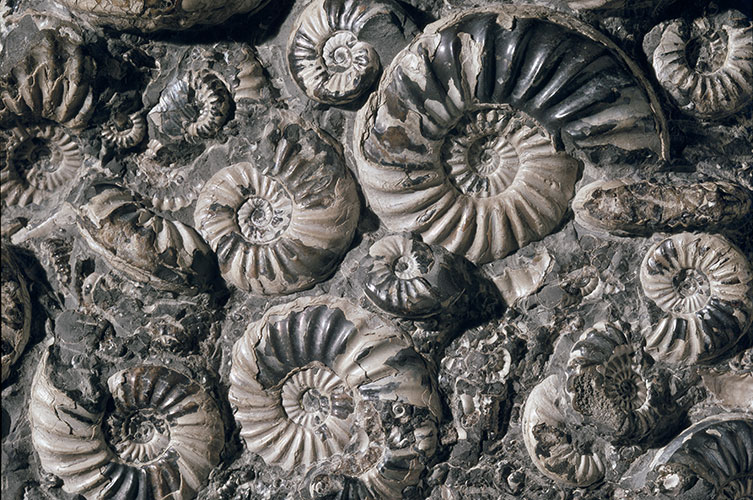
The ammonites Asteroceras and Promicroceras, found near Yeovil in Somerset. Notice their distinctive coiled shells.
Ammonites are related to the squids and octopuses you can see today, but they’re all extinct. They died out at around the same time as the dinosaurs, 66 million years ago.
Their shell is usually a flat spiral shape. It’s made up of chambers, like little rooms within the shell, connected by a tube. Ammonites added new chambers to their shell as they grew. The animal only lived in one of these chambers and used the other spaces to help it float. Some ammonite species were tiny, others as big as a person.
Ammonites lived in the sea. If you find an ammonite fossil in a rock, you know that millions of years ago the spot where you’re standing used to be totally underwater.
Good places to find ammonite fossils: Lyme Regis in Dorset and Runswick Bay in Yorkshire
Common in rocks aged: about 201 to 66 million years old, from the Jurassic and Cretaceous periods
Trilobites
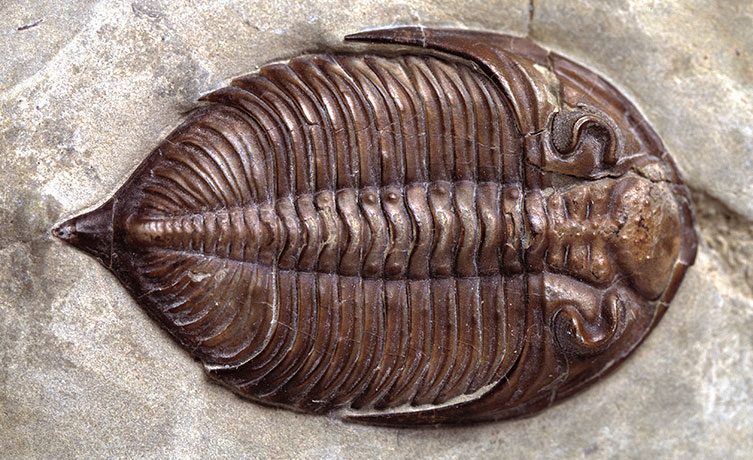
Dalmanites myops, a trilobite found in 420-million-year-old limestone rock at Dudley in Worcestershire
Trilobites are strange-looking creatures that lived hundreds of millions of years ago. They are distant relatives of crabs and lived in the sea. Some swam, while others walked on the sea floor.
These animals first appeared 520 million years ago and by 251 million years ago they had all gone extinct, disappearing just before the Permian mass extinction.
Trilobites were many different shapes and sizes. Their bodies had three main parts - a head, body and tail. They had a hard cover on their back. This is usually what we are looking at when we find a trilobite fossil.
We know that many trilobites could roll up, like woodlice can, as fossils often show them in this position.
Good places to find trilobite fossils: Torquay in Devon, Marloes Sands in Wales and Coniston in Cumbria. Two very famous sites are Wren’s Nest in Dudley and Girvan in Scotland.
Common in rocks aged: 485 to 419 million years old, from the Ordovician and Silurian periods
Bivalves
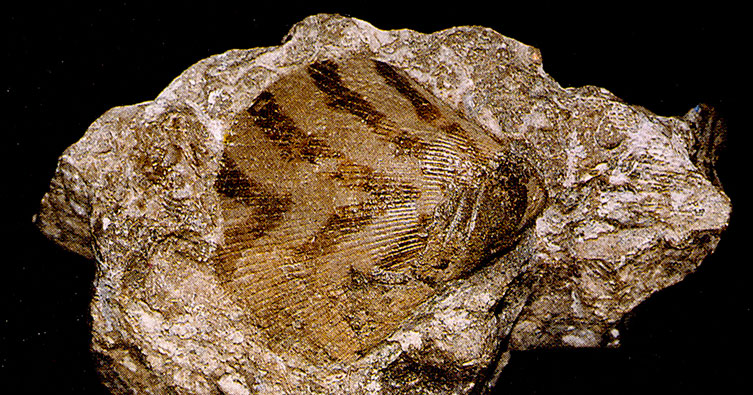
A piece of rock containing a single shell of the bivalve Aviculopectin planoradiatus. This fossil is unusual because you can still see the shell's original V-shaped markings.
Bivalves have two shells, known as valves. Their shells are usually mirror images of each other.
The oldest bivalve fossils are over 500 million years old, dating to the Early Cambrian Period. But they are much more common in younger rocks. Sometimes there are so many fossil bivalves that they form whole layers of rock.
Bivalves still live in the sea and in freshwater around the world. There around 6,500 living species of them. Some dig burrows in sand or mud, others just lie on the surface, and some attach to a hard surface. Oysters, mussels and cockles are probably the most well-known examples alive today.
Good places to find bivalve fossils: beaches and cliffs around the coast of southern, eastern and northern England, South Wales and southern Scotland
Common in rocks aged: 201 million years old and younger, from the Jurassic Period onwards
Brachiopods
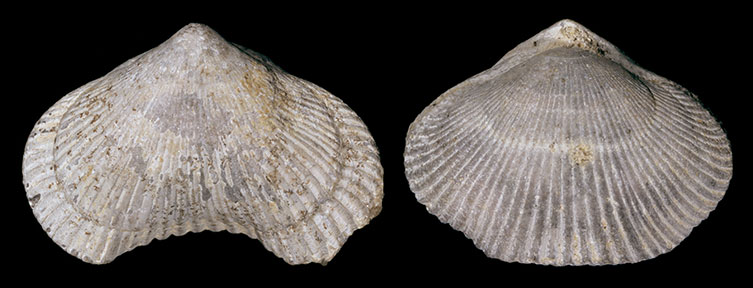
Top and bottom views of the brachiopod Cyclothyris difformis. This three-centimetre-long fossil was found in Devon.
Brachiopods live in the sea, usually attached to a hard surface.
There aren’t many different kinds of brachiopod around today, but there used to be, so there are lots to find and identify. They are very common fossils in rocks over 66 million years old.
Brachiopods are filter feeding animals that live in the sea. They look very similar to bivalves, as they also have two shells. The best way to tell the difference is to compare the size and shape of the two shells. In brachiopods one shell is usually bigger than the other, and the larger shell has a small hole at the top.
Good places to find brachiopod fossils: southern, eastern and northern England, Wales and southern Scotland, particularly on the coast where rocks are exposed
Common in rocks aged: 541 to 66 million years old, from the Palaeozoic and Mesozoic eras
Sponges
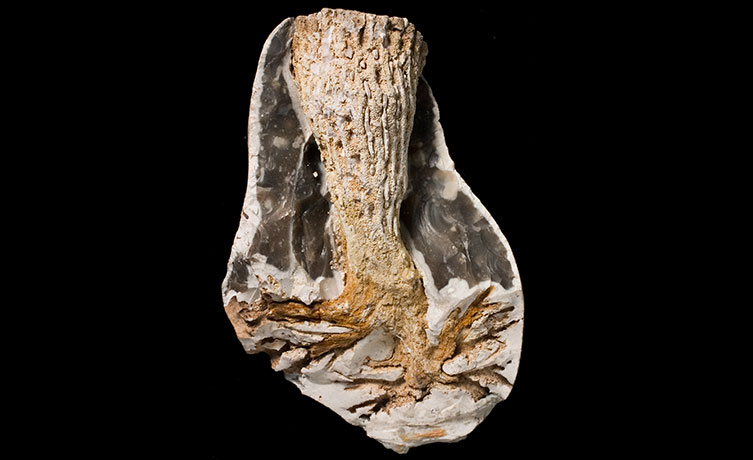
A piece of flint broken open to reveal the fossil sponge Ventriculites inside
Sponges are ancient animals that mostly live in the sea. Their bodies consist of simple groups of cells which can arrange themselves into large and complex shapes. These animals filter water and provide structures for others species to hide in or lay their eggs on.
Some sponges produce a skeleton made of silica - the hard substance that sand is usually made of.
When sponges fossilise, the silica sometimes dissolves and then forms flint. This rock sometimes preserves fossils, including other sponges. So you can often find fossil sponges on beaches where most of the pebbles are made of flint. Look out for flint pebbles with patterns of holes in them.
Flint is usually dark grey or brown but it often occurs in lumps with a thin, white outer layer.
Good places to find fossil sponges: pebbly beaches in southern and eastern England, particularly ones close to chalk cliffs
Common in rocks aged: 145 to 66 million years old, from the Cretaceous Period
Sea urchins
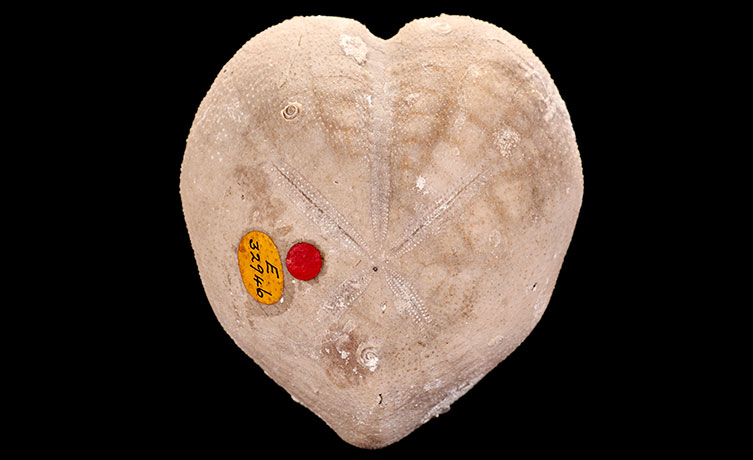
A common heart-shaped sea urchin, Micraster coranguinum
Sea urchins are related to starfish. They live in the sea, either buried in sediment such as mud or sand on the sea floor, or on top of it.
Sea urchins are often quite round, and about the size of an apple. They can also be heart-shaped or a flat disc.
When the animal is alive, its skeleton - called a test - is covered with skin and many sharp, needle-like spines. When it dies, the spines fall off, so you wont often find them as part of the fossil, but you can see the round lumps where they used to be attached.
If you look in chalk rock you might find lumps of flint that have sea urchin fossils in them. And when you are on a beach keep a look out for a rounded pebble with a starfish-like pattern on it - you might get lucky.
Good places to find sea urchin fossils: pebbly beaches in southern and eastern England, particularly those near chalk cliffs
Common in rocks aged: 201 to 66 million years old, from the Jurassic and Cretaceous periods
Shark teeth
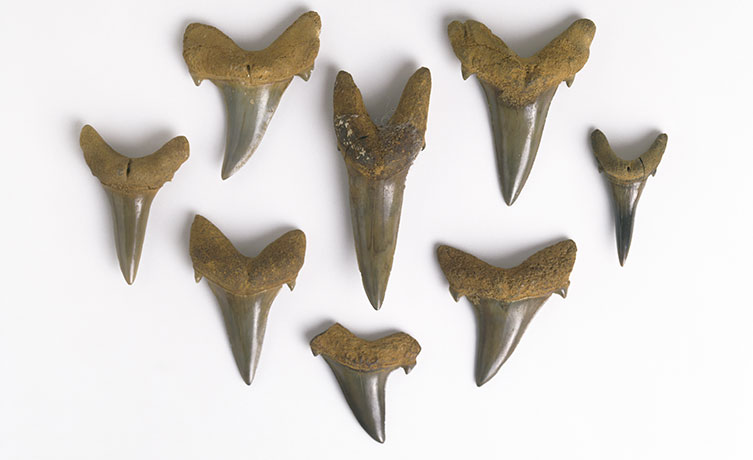
A collection of fossil teeth from the sand tiger shark, Odontaspis robusta. They were found in Kent.
A shark grows and loses a lot of teeth during its life. This means that in places where shark’s teeth are found as fossils, they are often extremely common.
The main part of the tooth is usually sharp and pointed, ideal for piercing the flesh of its prey, and it’s attached to a banana-shaped root.
Sharks have been around for a very long time - the oldest shark fossils discovered are more than 400 million years old. But fossils of whole sharks are rare. This is because their skeletons are made of cartilage, which is much softer than bone and rarely becomes fossilised.
Good places to find shark teeth fossils: Sheppey in Kent and Bracklesham Bay in Sussex
Common in rocks aged: 56 to 34 million years old, from the Eocene Epoch
Bones of dinosaurs and other reptiles
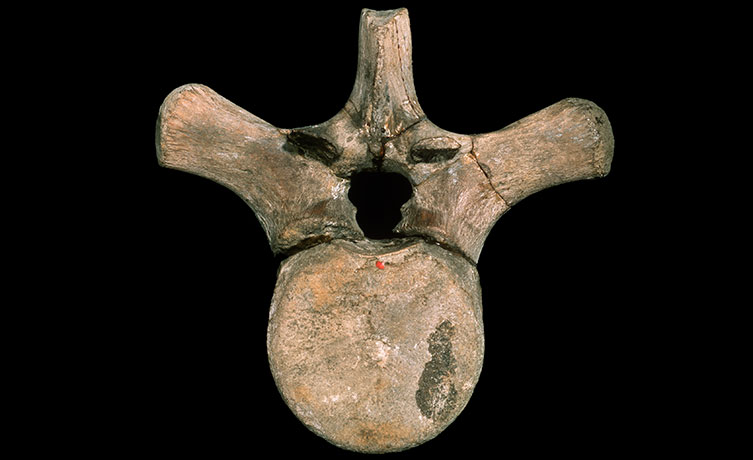
Part of the backbone of Liopleurodon. This huge reptile lived in the sea and was a fearsome predator.
Dinosaurs are probably the most famous prehistoric animals. At the same time as they were walking about on land, other enormous reptiles were living in the sea. But around 66 million years ago, dinosaurs and most marine reptiles died out.
Because of where dinosaurs lived, their bones are usually found in rocks that formed in swamps and river valleys. The bones are usually black or brown and you can see a honeycomb structure on the inside of broken ones.
The vertebrae - parts of the backbone - of marine reptiles such as ichthyosaurs and plesiosaurs are disc-shaped. But beware: pieces of flint can often look like bones.
Good places to find dinosaur bones: Yaverland Beach and Compton Bay on the Isle of Wight. Or you may find dinosaur footprints at North Bay, Scarborough or on the Isle of Skye.
Common in rocks aged: 201 to 125 million years old, from the Jurassic and Early Cretaceous periods
Good places to find marine reptile fossils: Charmouth in Dorset and Whitby in Yorkshire
Common in rocks aged: 201 to 145 million years old, from the Jurassic Period
Common UK fossils
The fossils above aren’t the only ones you can find in the UK. Other common fossils include creatures called belemnites, corals and gastropods, as well as fossil plants.
Help to identify your fossil finds is available from our Identification and Advisory Service.
Lyme Regis Fossil Festival
Enjoy talks, walks and fun activities for the whole family at this annual event.
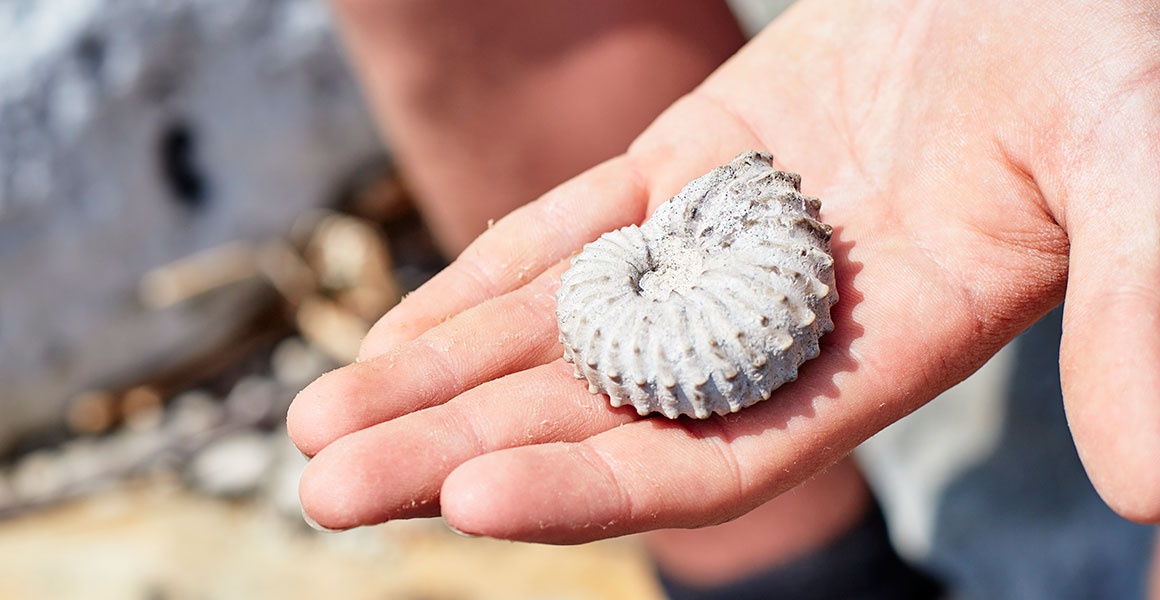


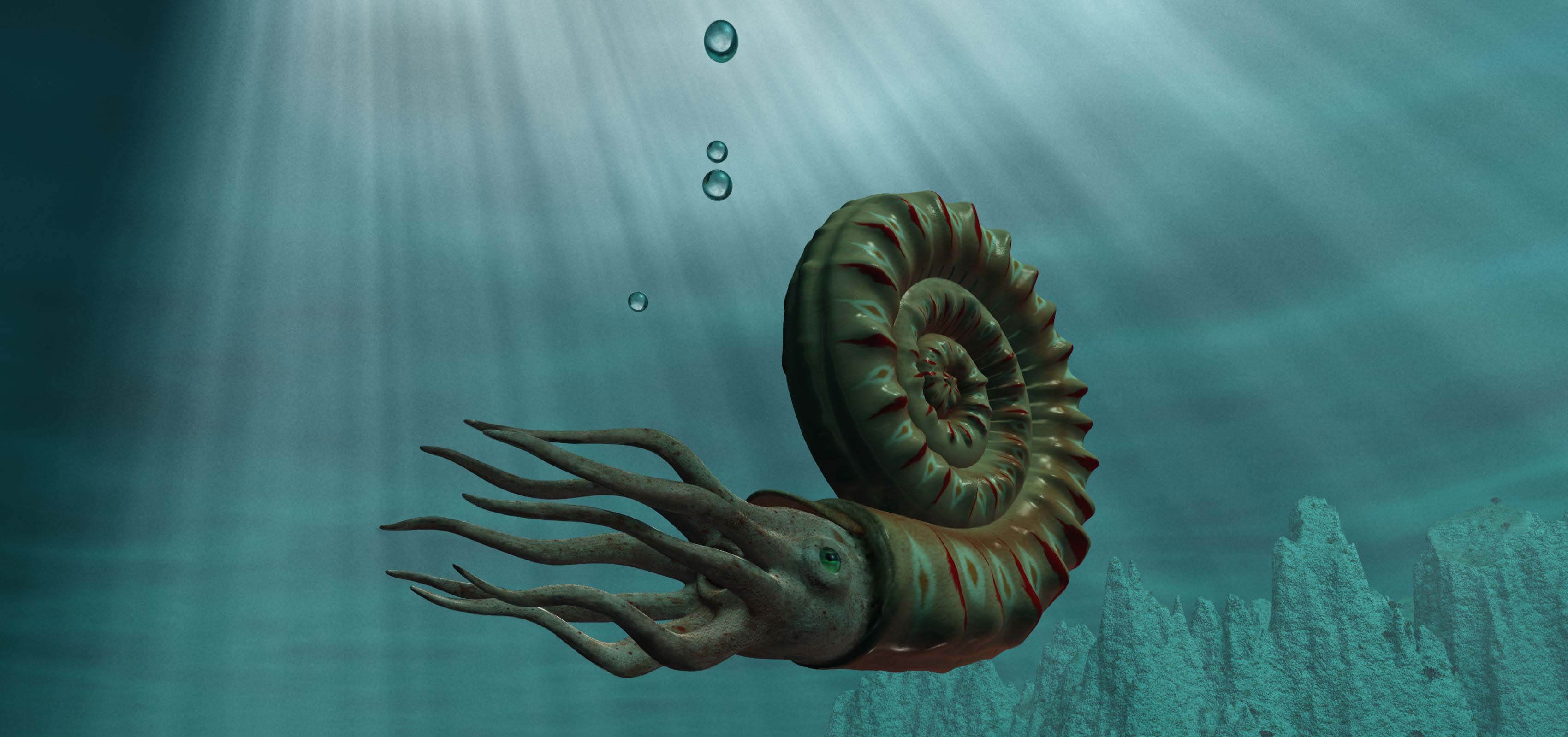
Don't miss a thing
Receive email updates about our news, science, exhibitions, events, products, services and fundraising activities. We may occasionally include third-party content from our corporate partners and other museums. We will not share your personal details with these third parties. You must be over the age of 13. Privacy notice.
Follow us on social media